What is
CONTROLLED TRAFFIC FARMING?
CTF is a farming system that provides greater productivity, sustainability and profitability than traditional methods.
Improved soil structure underpins the benefits of CTF. This is achieved by restricting all heavy machinery wheels to the smallest possible area of permanent traffic lanes where compaction is beneficial for traction and field access. Soil under CTF can absorb and hold more plant-available water and nutrients and can be managed with less time and energy input. Adoption of CTF at
Soil under CTF can absorb and hold more plant-available water and nutrients and can be managed with less time and energy input. Adoption of CTF at reasonable cost requires a long-term plan for modification of equipment (to ensure all traffic occurs on permanent traffic lanes) and farm layout (to ensure optimal drainage).
BARLEY HARVEST
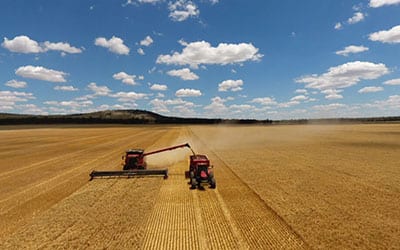
Photo courtesy C French
LENTILS IN WHEAT STUBBLE
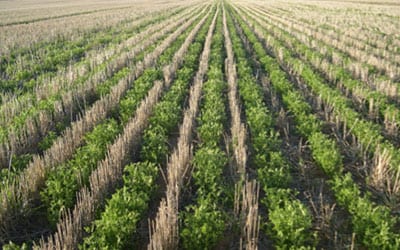
Photo courtesy R Ruwolt
RIPPING
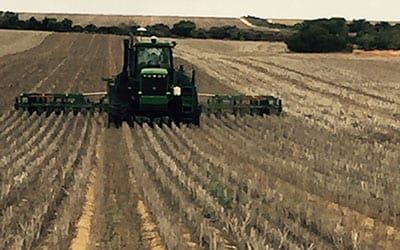
The fundamentals
- All machinery has the same or modular working and track gauge width which allows establishment of permanent traffic lanes
- All machinery is capable of precise guidance along the permanent traffic lanes*
- Farm, paddock and permanent traffic lane layout arranged to optimise drainage and logistics
Integration of the whole gives a CTF system that provides:
- Improved productivity, profit and sustainability
- Improved resilience to climate variability
- Easier and improved record keeping **
- Enhanced lifestyle **
- Future integration of automation and robotics **
* Normally achieved with GNSS autosteer for all machinery with all way lines referenced to a permanent base station location or CORS network to provide “2 cm” guidance accuracy.
**Ample research and farmer experience confirming these points.
These foundations allow integration of a number of other practices and technologies such as:
- Minimal soil disturbance, preferably zero-till, or at most strip-till
- More intensive cropping frequency and cover crops to maximise biomass production and provide greater residue return to the system
- Precise management such as inter-row seeding and accurate application of chemicals and fertiliser
- Spatial monitoring, mapping and management (e.g. yield mapping and subsequent zonal management, if required) at progressively finer scale within a defined spatial framework (i.e. permanent traffic and crop zones)
- Accurate and repeatable on-farm research trials based on a defined spatial framework and spatial technologies
QUICK LINKS
CONTROLLED TRAFFIC FARMING IN ACTION
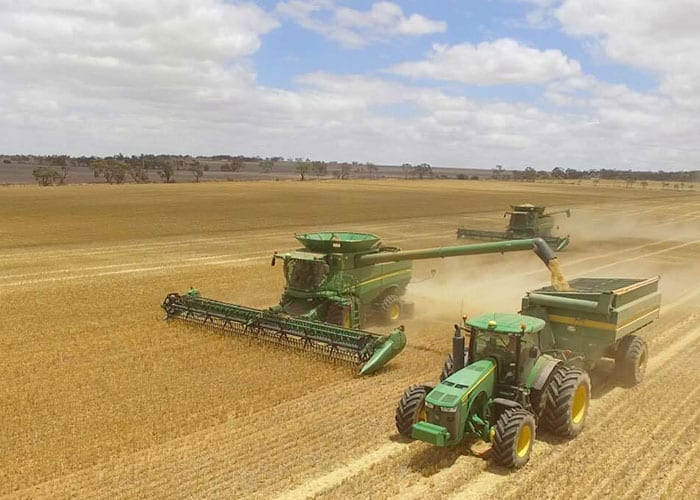
Photo courtesy Alex Grove
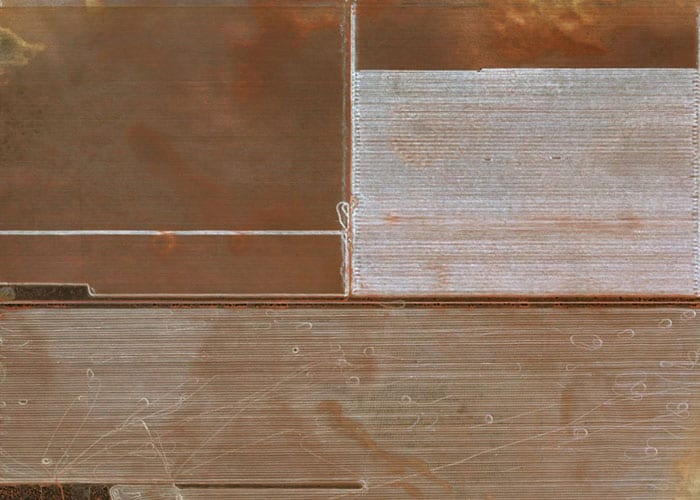
Photo courtesy Michael Ford
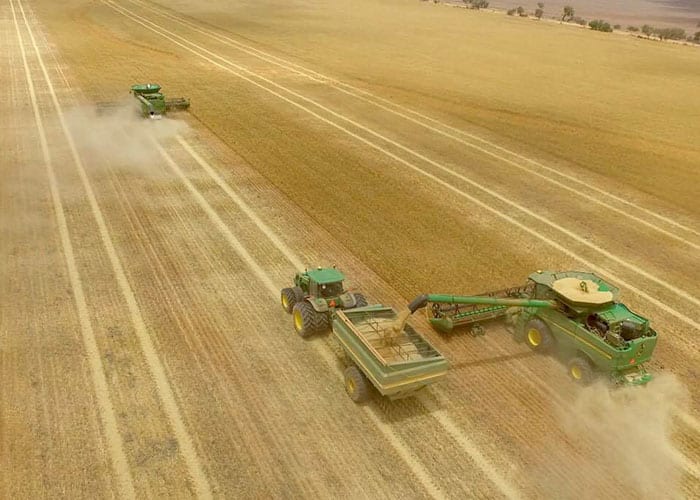
Photo courtesy Tristan Wilson
PROVEN BENEFITS
Cropping farmers adopt farming systems that suit their environmental, economic and personal circumstances. No matter what those circumstances may be, they can be improved by CTF, which has been adopted by many farmers in Australia and around the world in the grain, horticulture, forage, sugar and cotton industries.
The foundation of CTF is the use of compacted, permanent wheel tracks to support all load bearing machinery wheels. The aim is to minimise the area of permanent wheel tracks. Some machinery configurations in some industries can achieve a wheel track area as low as 10%. The remainder of the soil never carries a load bearing wheel, and so stays in the best possible condition for maximum crop performance. In simple terms, “Plants grow better in soft soil, while wheels work better on roads”.
Optimum crop production is achieved in soils that allow lots of beneficial biological activity – e.g. micro-organisms, earthworms and crop root growth. These processes rely on “aerobic” conditions – i.e. soil with lot of air-filled soil pores. Squashing the air out of the soil with load bearing wheels is harmful to those processes and therefore limits plant growth.
While CTF is built on beneficial changes in the soil, the potential of CTF is much more than that. Improving the soil and increasing crop yield is just the start. The process of controlling traffic, and the precision required to achieve that, opens the door to many ‘system’ benefits. These include, but are not limited to:
- Improved timeliness leading to greater cropping frequency and reliability
- More efficient use of nutrients and water
- Reduced erosion
- Lower fuel and pesticide use
- Reduced capital costs for machinery
- The establishment of a spatial framework for crop and paddock management
- Less time farming, more time doing other things
Farmers adopting CTF find it helps them optimise the use of many other technologies and practices used on their farm. These production, economic and systems benefits are all discussed in materials available on the ACTFA website, including in CTF Conference papers written by farmers describing their own experiences.
